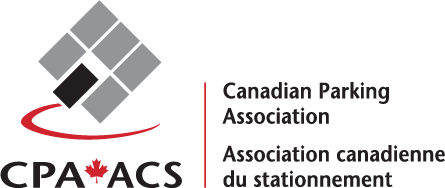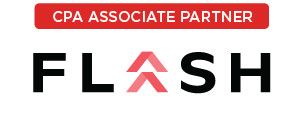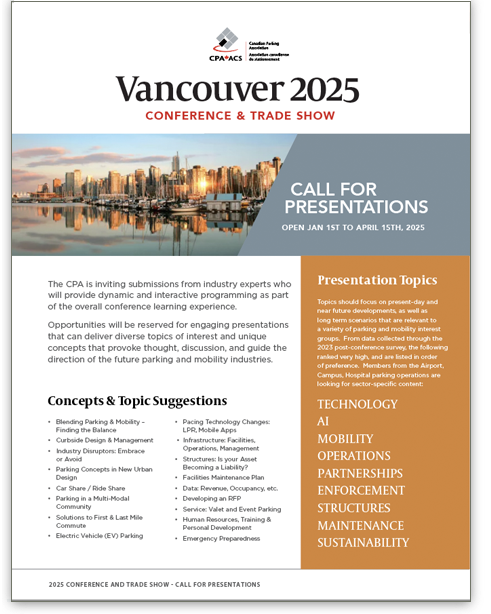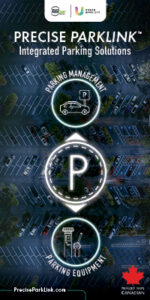By Bob Andrews
The electric vehicle age is coming, and it will have a significant impact on parking owners across Canada. Both the national government and the automakers themselves have set aggressive EV goals. The Canadian government has mandated that all new light-duty vehicle sales must be zero-emission by 2035, with interim targets set at 20% by 2026 and 60% by 2030. Furthermore, at least 35% of new medium- and heavy-duty vehicle sales must by ZEVs by 2030, with full adoption by 2040 “where feasible.”
Automakers’ targets are just as aggressive. General Motors plans to produce only EVs by 2035 and Volvo plans to be fully electric by 2030. As a result of these impending changes, parking owners must now figure out how to add EV charging to their parking assets, how much to add, and most importantly, which technology to implement. Most charging will occur in parking facilities, particularly those that provide long-term parking, so the transition to electric vehicles will have a particularly pronounced impact on parking owners and institutions with parking assets.
At least for now, adding EV chargers is primarily a matter of being able to offer an attractive user amenity. But there are financial reasons to be focused on EV charging too. Parking is already an important source of income for many properties and institutions, and monetizing EV charging will just make parking more valuable. However, owners will only realize the full potential value of their EV infrastructure if they plan carefully and make the right choices when selecting their EV technology.
Choosing the Right EV Hardware and Software
With the rapid rate of EV adoption that we’re experiencing now, it may be tempting to find a quick solution or the cheapest option for efficiency’s sake—to “get it and forget it or…
By Stephen Prati
Canadian airports have been actively investing in infrastructure upgrades and expansion to enhance safety, operational efficiency, and accommodate growing air travel demand. Since the early 1990s, over $30 billion has been invested in airport infrastructure improvements. Parking has played an important role in these improvement projects.
The pace of this investment has accelerated in recent years. In response to the financial challenges posed by the COVID-19 pandemic, the Canadian government introduced the Airport Critical Infrastructure Program (ACIP) in 2021. This program has committed more than $570 million to 19 of Canada’s larger airports, supporting 39 critical infrastructure projects aimed at enhancing safety, security, and operational efficiency. Additionally, in May 2024, the government announced over $27 million in new funding to upgrade airports across the country, ensuring continued access to reliable and safe air connectivity for Canadians.
Airport terminal improvements are particularly prevalent. Currently, major airport terminal projects are underway at many of the country’s largest and busiest airports, including Toronto Pearson International, Kelowna International, Edmonton International, Montréal-Trudeau International Airport, and Calgary International Airports. It’s estimated that about $6 billion dollars are currently being spent on airport improvement projects throughout Canada.
For instance, Montréal-Trudeau International Airport is currently undergoing a $4 billion makeover that includes expanding roadways and drop-off areas and building a new terminal. As part of this improvement project, an existing 5,000-vehicle lot will be demolished to make room for the construction of expanded, multi-level drop-off and pick-up areas, effectively tripling the current curbside capacity at the airport’s main entrance. The lost parking spaces will be replaced through the construction of several new parkades located throughout the airport campus.
These improvement projects are good news for both airport administrators and travelers, but they also present tremendous challenges. It can be difficult to maintain…
By Steve Gorski
The Canadian government strongly supports the development of smart cities as a means to enhance urban sustainability, digital innovation, and public well-being. Initiatives like the Smart Cities Challenge launched by Infrastructure Canada and the Investing in Canada Plan have led to the investment of hundreds of billions of dollars in smart city development across Canada. And these investments have been perfectly timed. The introduction of innovative parking and mobility technologies in recent years is making it possible for the longstanding smart city dreams of federal, provincial, and municipal leaders and urban planners to finally be realized.
At the core of smart city initiatives are several key objectives aimed at improving the quality of life for citizens: reduced congestion and enhanced mobility, better energy management, more resilient and adaptive infrastructure, more efficient public services, and greater citizen engagement.
The Role of Technology in Smart Cities
Technology is the key enabler of smart city development, facilitating real-time data collection, processing, and analysis to drive efficient urban system management. The most important smart city technologies include:
- Parking Guidance Systems (PGS): Directs drivers to available parking spaces, reducing congestion and emissions caused by unnecessary searching.
- Parking and Revenue Control Systems (PARCS): Automates parking management, integrating payment, access control, and occupancy tracking.
- Intelligent Traffic Systems (ITS): Utilizes real-time data and algorithms to optimize traffic flow, enhance safety, and reduce travel times.
- Parking Pre-Booking: Allows drivers to reserve parking spaces in advance, streamlining city logistics and improving the user experience.
- AI for Predictive Wayfinding: Combines AI with real-time data to guide drivers to optimal routes and parking spots, reducing delays, and enhancing urban mobility.
Hardware is just part of the equation though. To create seamless smart cities, open interfaces and interoperability are crucial. First…
By Rick Neubauer
Curb management is rapidly becoming a major issue in Canada, particularly in densely populated cities like Toronto, Vancouver, and Montreal. Urban congestion is increasing for a number of reasons, including rising e-commerce deliveries, the growing presence of ride-hailing services, and the overall demand for curb space. This has created a pressing need for municipalities to rethink how they allocate and regulate curb space effectively.
Why is it so important for cities throughout Canada to address this issue? Rising competition for curb space has led to increased traffic congestion and related safety issues, a host of regulatory challenges as cities struggle to create curb management policies from scratch, and stumbles in achieving sustainability goals. Without well-planned curb management strategies, cities risk worsening congestion, facing increased carbon emissions, and suffering from inefficient use of public space.
The good news is that technology can help. As municipalities strive to develop smart city initiatives, artificial intelligence (AI) has emerged as a promising tool to enhance curb space efficiency as well as anticipate and meet evolving urban mobility demands. However, the rise of “AI-washing” has made it difficult for cities to differentiate between truly valuable AI-powered solutions and mere marketing buzzwords.
Identifying True AI-Powered Solutions
While AI has the potential to revolutionize curb management by leveraging predictive analytics and allowing cities to take a more proactive stance on managing curb real estate, not every technology that claims to use AI is genuinely leveraging its capabilities. Many companies in the parking and mobility sector promote their solutions as AI-driven when they are merely repackaging basic data analytics or rule-based automation. This phenomenon, known as AI-washing, makes it harder for decision-makers to identify which technologies offer real, strategic value. To avoid succumbing to AI-washing, city planners and managers should ask key…
By Luigi Lato, Chief Operating Officer, Precise ParkLink
As we enter 2025, technological advancements and the rising emphasis on connected experiences are transforming the parking industry. These innovations create opportunities to improve customer journeys, streamline operations, and achieve sustainability goals. Adopting a forward-thinking strategy is essential for facility managers and owners to stay competitive in this evolving landscape.
Check out the top 25 solutions to empower your parking management strategy and position you for success in the upcoming year and beyond.
1. Advanced electric vehicle (EV) charging solutions tailored to societal demands.
With the Canadian government mandating the end of gas-powered vehicle production by 2025, the demand for electric vehicles (EV) is gaining popularity. Now is the time to start planning your EV charging station infrastructure. Installing EV charging stations within your parking facility increases your lot’s desirability, catering to a broader audience in search of convenient and sustainable parking solutions.
2. Leverage Internet of Things (IoT) and smart parking sensors for real-time insights and streamlined operations.
Deploying smart parking sensors can provide real-time data on occupancy levels. These sensors detect whether a parking stall is vacant or occupied and transmit this information to a centralized system. Seamlessly tracking vehicular data for various use cases facilitates optimal space utilization, minimizes congestion, and elevates overall operational effectiveness.
3. Enhancing parking facility efficiency with internal automation.
Internal automation is revolutionizing parking facilities by streamlining operations and improving overall efficiency. From automation billing and permit management to real-time monitoring and enforcement, automation tools reduce the need for manual interventions, allowing staff to focus on higher-value tasks. It can offer faster, more accurate services while reducing operational costs by automating routine processes such as payment collection, permit issuance, and reporting. Additionally, automated systems provide real-time data and insights,…
Miami FL (March 12, 2025) – Survision, a global leader in Vehicle Identification technology, has successfully integrated its advanced Cloud Parking Enforcement Software, PlatEnforce, with Parkmobile, a leading mobile parking payment platform. This strategic software integration enables parking operators to seamlessly enforce paid parking policies at sites using Parkmobile, improving efficiency and compliance.
With this integration, parking operators leveraging Parkmobile’s system can now automatically validate payments and enforce parking violations in real time using Survision’s PlatEnforce. This reduces the reliance on manual enforcement and enhances accuracy, ensuring a streamlined parking experience for both operators and customers.
Key Benefits of the Integration:
- New Flexibility for Operators: Survision Solution can be easily moved from one vehicle to another
- Automated Parking Enforcement: PlatEnforce seamlessly cross-references Parkmobile transactions, identifying violations instantly.
- Enhanced Accuracy and Efficiency: Eliminates human errors associated with manual enforcement methods.
- Cloud-Based Solution: Offers remote access and real-time enforcement data, improving operational flexibility.
- Seamless User Experience: Ensures a frictionless process for customers, with fewer disputes and increased compliance.
“I have always admired ParkMobile’s mission to make cities more livable, and I am thrilled that Survision’s vehicle identification technology can play a key role in enhancing this vision. By integrating our advanced solutions, we can provide a seamless parking experience for users while helping operators improve efficiency and compliance. This partnership is another step toward creating smarter, more enjoyable urban environments for everyone.” Laura Caillot, Managing Director at Survision LLC
The integration is now live and available to parking operators utilizing Parkmobile’s payment system, allowing them to enhance enforcement strategies and maximize revenue while ensuring fair parking compliance.
For more information on how this integration can benefit your parking operation, visit survisiongroup.com/platenforce and https://parkmobile.io/.
By Stephanie Nowe-Morris
Parking structures are often overlooked in urban planning, especially in healthcare settings where demands are unique and multifaceted. The recently opened QEII Health Sciences Centre Parkade stands as a testament to Nova Scotia’s commitment to accessible and sustainable design, providing a new model for modern parking that balances functionality with community needs. This editorial explores how the QEII Parkade has transformed into a vibrant landmark, integrated part of Halifax, serving patients, visitors, staff, and the broader community.

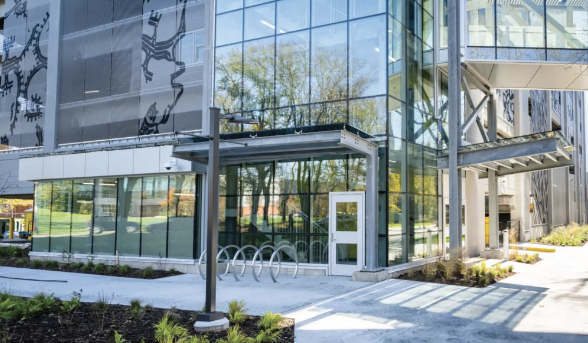
1. Designing for Accessibility in Healthcare
Accessibility lies at the heart of the QEII Parkade’s design. Located directly across the street from the Halifax Infirmary, accessible by a pedway the parkade provides convenient, centralized parking for patients, visitors, and healthcare staff, with a capacity for 540 vehicles. This proximity minimizes walking distances, offering seamless access for those with limited mobility and reducing stress for anyone navigating healthcare services.
To ensure universal accessibility, the parkade includes a range of thoughtful features. Ample accessible parking spaces, intuitive wayfinding signs, and resting areas have all been incorporated to prioritize comfort. A pedway connection from the parkade to the main lobby enhances safety and ease of access, and redundant elevators, tactile indicators for the visually impaired, and Staxi services further emphasize inclusivity. The QEII Parkade sets a new benchmark in accessible design for healthcare infrastructure, highlighting the importance of creating spaces that support all individuals’ needs.
2. Public Consultation: Engaging Stakeholders for Better Community Integration
Community integration was a key priority throughout the planning and design process of the QEII Parkade. Extensive public consultations took place to engage local stakeholders and address any concerns, ensuring that the parkade would be welcomed by the Halifax community. This…
By Todd Tucker
The Smart City. It has been the goal of urban planners and municipal leaders for years. When planners and politicians picture a smart city, they see an urban environment where technology and data collection improve the quality of life and the sustainability and efficiency of city operations.
For many communities, the most important manifestations of smart city planning revolve around mobility and parking. If visitors to an urban center can get to their ultimate downtown destination quickly, directly, and safely, the benefits are significant. Roads become less congested and, as a result, safer; the quality of life improves because of this reduced congestion; and local businesses are more likely to thrive because it’s easier for patrons and employees of local businesses to get downtown.
Smart city success is built on technology, and parking technology is the key. Specifically, parking guidance technology. Drivers need to park and making it easier to park will dramatically reduce congestion on city streets. There are several apps serving Canada that can provide basic information about where parking is available in a given city and how much it costs. But most are missing an essential element: occupancy data. These apps aren’t as useful as they could be if they don’t tell users whether there’s parking available in the parkade they’re choosing.
That’s why parking guidance technology is the driving force behind smart city parking planning. The technology already exists, and it’s up to Canada’s cities to implement those technologies.
The Power of Data
Smart cities run on data—data about where parking is available at that moment. The technology to produce the data is available, but so far, most cities and private parking owners haven’t taken full advantage of it.
Parking guidance technology makes it easy to…

